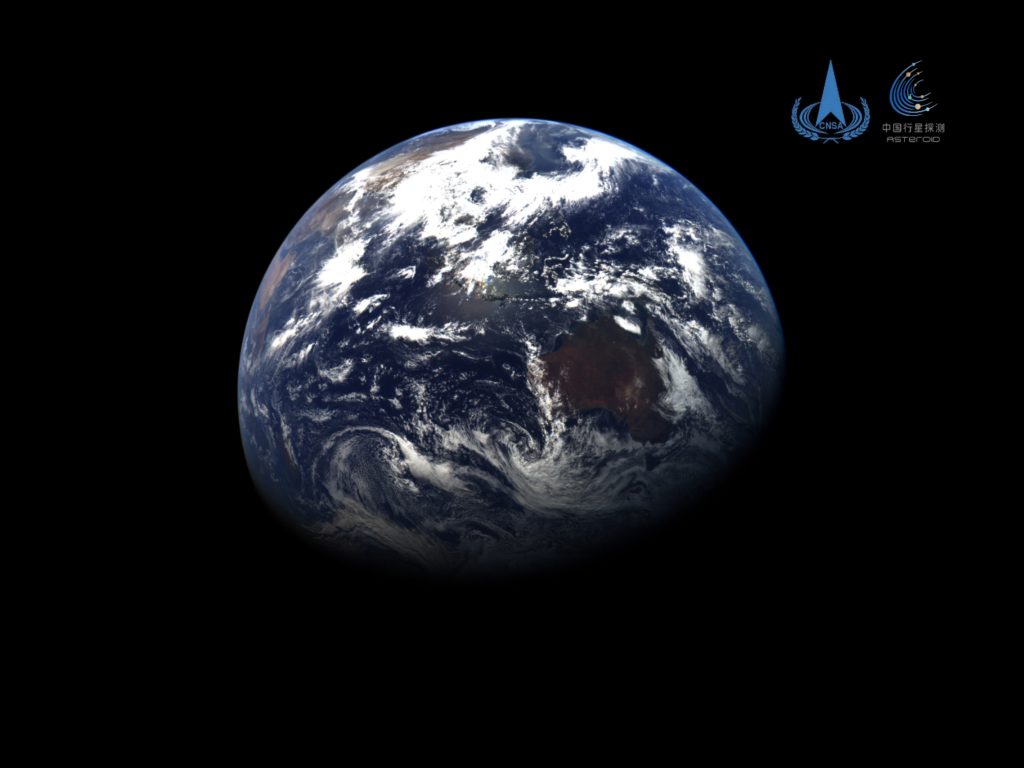CNSA releases images of Earth and moon taken by Tianwen-2 probe

The China National Space Administration (CNSA) on Tuesday released images of Earth and the moon captured by the country's Tianwen-2 asteroid probe. So far, the probe has been operating smoothly in orbit for more than 33 days and is more than 12 million kilometers from Earth, Global Times learned from the CNSA.
The administration said in a press release it provided to the Global Times that recently, the narrow-field navigation sensor onboard the Tianwen-2 probe captured images of the Earth and the moon, demonstrating excellent functional performance.
The released images include a photograph of Earth taken from approximately 590,000 kilometers away and a photograph of the moon taken at the same distance. These images were processed by researchers after being transmitted back to Earth.
The click of earth was taken by 1 pm on May 30 while the probe was 590,000 kilometers away from Earth while the moon image was captured 3 pm on the same day, per the CNSA.
The image of Earth and moon and their successful transmission back to the ground proved high reliability and stability of the probe's imaging system and the information link for the country's latest deep space exploration endeavor, Pang Zhihao, a senior space expert worked for decades at the China Academy of Space Technology, told the Global Times on Tuesday.
On June 6, the CNSA released an image captured by the probe showing the deployment of its circular solar panels, which is designed to meet the power supply requirements for exploring main belt comets located approximately 375 million kilometers from the Sun.
The Tianwen-2 probe, China's first asteroid sampling and return mission, was launched aboard a Long March-3B carrier rocket from the Xichang Satellite Launch Center in Southwest China's Sichuan Province on May 29 early morning. The mission aims to accomplish objectives over a decade-long expedition: collecting samples from near-Earth asteroid 2016HO3 and exploring main-belt comet 311P, which is farther from Earth than Mars.
Han Siyuan, Deputy Director of the Lunar Exploration and Space Engineering Center at the CNSA and spokesperson for the Tianwen-2 mission, revealed to the Global Times that the Tianwen-2 project team has also developed innovative approaches for small celestial body sampling. They have designed three sampling methods. In addition to the "touch-and-go" method, the mission will also attempt hovering sampling and attachment sampling.
According to the mission planners, after sampling the asteroid, the probe's return capsule is expected to deliver the samples back to Earth around 2027, and then the probe will continue its journey to explore the comet in the main asteroid belt between Mars and Jupiter around 2034.
The Tianwen missions are a series of robotic interstellar exploration launched by the CNSA to explore the solar system. The name comes from the long poem "Tianwen," meaning Heavenly Questions or Questions to Heaven, written by Qu Yuan (around 340-278 BC) one of ancient China's most esteemed poets.
China has previously launched the Tianwen-1 Mars probe mission on July 23, 2020, and achieved all designated objectives including orbiting, landing, and deploying a rover to survey the Martian surface in a single mission.